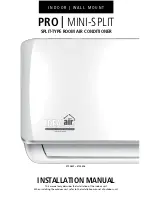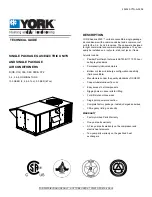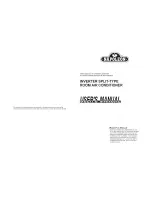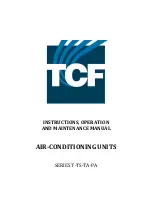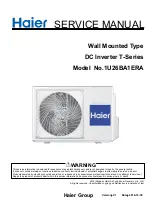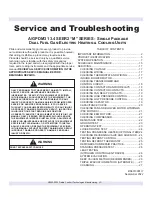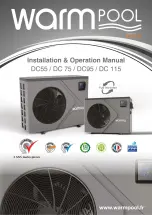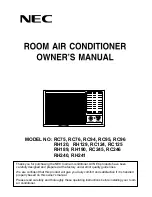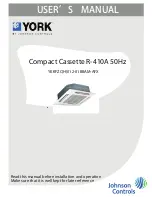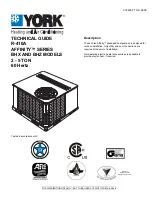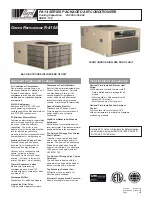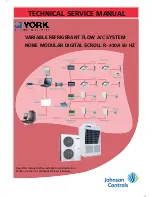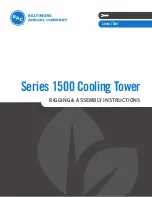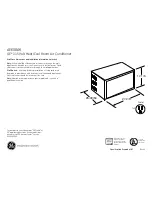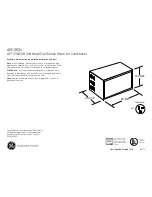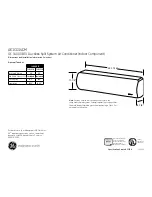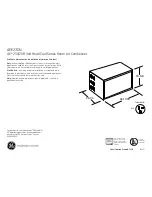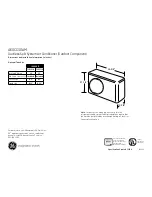
4 – Installation
• The installation in which the condensing unit is ins-
talled must comply to EU Pressure directive (PED)
no. 2014/68/EU. The condensing unit itself is not a
”unit” in the scope this directive. Under all circum-
stances local safety regulations must be fulfilled.
• The unit must be securely installed on a stable
and rigid support, and fixed from the begin-
ning. See picture 2.
• It is recommended to install the unit on rub-
ber grommets or vibration dampers . Rubber
pads with mounting bolts are supplied.
• Slowly release the nitrogen holding charge
through the schrader port.
• Connect the unit to the system as soon as possible
to avoid oil contamination from ambient moisture.
• Avoid material entering into the system while
cutting tubes. Never drill holes where burrs
cannot be removed.
• Braze with great care using state-of-the-art tech-
nique and vent piping with nitrogen gas flow.
• Connect the required safety and control de-
vices. When the schrader port is used for this,
remove the internal valve.
• CU function and reliability is ensured/verified
for super heat 10K (SH 10K) condition so, it is
recommended to insulate the suction pipe up
to the compressor inlet with 19 mm thick insu-
lation.
5 – Leak detection
Never pressurize the circuit with oxygen or
dry air. This could cause fire or explosion.
• Do not use dye for leak detection.
• Perform a leak detection test on the complete
system.
• The maximum test pressure is 32 bar.
• When a leak is discovered, repair the leak and
repeat the leak detection.
6 – Vacuum dehydration
• Never use the compressor to evacuate the system.
• Connect a vacuum pump to both the LP & HP
sides.
• Pull down the system under a vacuum of 500
μm Hg (0.67 mbar) absolute.
• Do not use a megohmmeter nor apply power
to the compressor while it is under vacuum as
this may cause internal damage.
7 – Electrical connections
• Switch off and isolate the main power supply.
• Ensure that power supply can not be switched
on during installation.
• All electrical components must be selected as
per local standards and unit requirements.
• Refer to wiring diagram for electrical connec-
tions details.
• Ensure that the power supply corresponds
to the unit characteristics and that the power
supply is stable (nominal voltage ±10% and
nominal frequency ±2,5 Hz).
• Dimension the power supply cables according
to unit data for voltage and current.
• Protect the power supply and ensure correct
earthing.
• Make the power supply according to local stan-
dards and legal requirements.
• The unit is equipped with high and low pressure
switches, which directly cut the power supply to
the compressor in case of activation.
8 – Filling the system
• Wear protective stuff like goggles and protec-
tive gloves.
• Never start the compressor under vacuum.
Keep the compressor switched off.
• Before charging the refrigerant, verify that the
oil level is between ¼ and ¾ on the compressor
oil sight glass. If additional oil is required please
refer to the compressors label for type of oil.
• Use only the refrigerant for which the unit is
designed for.
• Fill the refrigerant in liquid phase into the
condenser or liquid receiver. Ensure a slow
charging of the system to 4 – 5 bar for R404A.
• Do not put liquid refrigerant through suction line.
• It is not allowed to mix additives with the oil
and/or refrigerant
• The remaining charge is done until the instal-
lation has reached a level of stable nominal
condition during operation.
• Never leave the filling cylinder connected to
the circuit.
9 – Verification before commissioning
Use safety devices in compliance with both
generally and locally applicable regulations and
safety standards.
• Verify that all electrical connections are properly
fastened and in compliance with local regulations.
• When a crankcase heater is required, it must be
energized at least 12 hours before initial start-
up and start-up after prolonged shut-down
period.
10 – Start-up
• Never start the unit when no refrigerant is char-
ged.
• All service valves must be in the open position.
See picture 3.
• Check compliance between unit and power
supply.
• Check that the crankcase heater is working.
• Check that the fan can rotate freely.
• Balance the High Pressure / Low Pressure.
• Energize the unit. It must start promptly. If
the compressor does not start, check wiring
conformity, voltage on terminals and sequence
phase.
11 – Check with running unit
• Check the fan rotation direction. Air must flow
from the condenser towards the fan.
• Check current draw and voltage.
• Check suction superheat to reduce risk of slug-
ging.
• When a sight glass is provided observe the oil
level at start and during operation to confirm
that the oil level remains visible.
• Respect the operating limits.
• Check all tubes for abnormal vibration. Move-
ments in excess of 1.5 mm require corrective
measures such as tube brackets.
• When needed, additional refrigerant in liquid
phase may be added in the low-pressure side as
far away as possible from the compressor. The
compressor must be operating during this pro-
cess.
• Do not overcharge the system.
• Never release refrigerant to atmosphere.
• Before leaving the installation site, carry out
a general installation inspection regarding
cleanliness, noise and leak detection.
• Record type and amount of refrigerant charge
as well as operating conditions as a reference
for future inspections.
12 – Maintenance
Always switch off the unit at main switch
before remove fan panel.
Internal pressure and surface temperature
are dangerous and may cause permanent injury.
Maintenance operators and installers require
appropriate skills and tools. Tubing temperature
may exceed 100°C and can cause severe burns.
Ensure that periodic service inspections to
ensure system reliability and as required by local
regulations are performed.
This appliance is not intended for use by per-
sons (including children) with reduced physical,
sensory or mental capabilities, or lack of expe-
rience and knowledge, unless they have been gi-
ven supervision or instruction concerning use of
the appliance by a person responsible for their
safety. Children should be supervised to ensure
that they do not play with the appliance
To prevent system related problems, following
Periodic maintenance is recommended:
• Verify that safety devices are operational and
properly set.
• Ensure that the system is leak tight.
• Check the compressor current draw.
• Confirm that the system is operating in a way
consistent with previous maintenance records
and ambient conditions.
• Check that all electrical connections are still
adequately fastened.
• Keep the unit clean and verify the absence of
rust and oxidation on the unit components,
tubes and electrical connections.
The condenser must be checked at least once
a year for clogging and be cleaned if deemed
necessary. Access to the internal side of the
condenser takes place through the fan panel.
Microchannel coils tend to accumulate dirt on
the surface rather than inside, which makes
them easier to clean than fin-&-tube coils.
• Switch off the unit at main switch before re-
move any panel from the condensing unit.
• Remove surface dirt, leaves, fibres, etc. with
a vacuum cleaner, equipped with a brush or
other soft attachment. Alternatively, blow com-
pressed air through the coil from the inside out,
and brush with a soft bristle. Do not use a wire
brush. Do not impact or scrape the coil with the
vacuum tube or air nozzle.
If the refrigerant system has been opened, the
system has to be flushed with dry air or nitrogen
to remove moisture and a new filter drier has to
be installed. If evacuation of refrigerant has to be
done, it shall be done in such a way that no refri-
gerant can escape to the environment.
13 - Warranty
Always transmit the model number and serial num-
ber with any claim filed regarding this product.
The product warranty may be void in following
cases:
• Absence of nameplate.
• External modifications; in particular, drilling,
welding, broken feet and shock marks.
• Compressor opened or returned unsealed.
• Rust, water or leak detection dye inside the
compressor.
• Use of a refrigerant or lubricant not approved
by Danfoss.
• Any deviation from recommended instructions
pertaining to installation, application or main-
tenance.
• Use in mobile applications.
• Use in explosive atmospheric environment.
• No model number or serial number transmit-
ted with the warranty claim.
14 – Disposal
Danfoss recommends that condensing
units and oil should be recycled by a
suitable company at its site.
Instructions
2 | © Danfoss | DCS (CC) | 2017.12
FRCC.PI.056.A2.02











